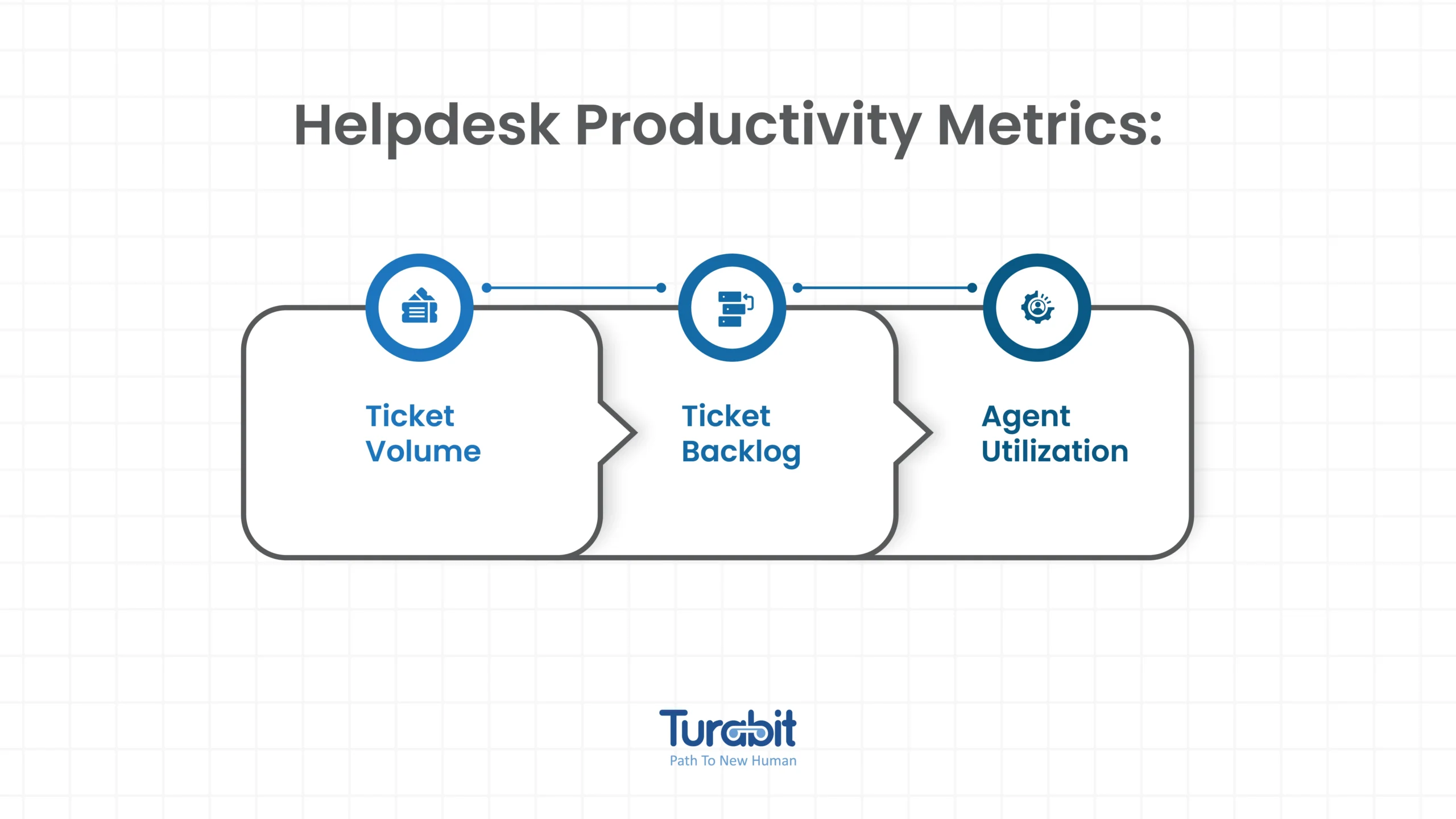Productivity isn’t just about working harder, it’s about working smarter. With an endless stream of tickets, technical glitches, and user requests, tracking productivity metrics is essential to ensure your support team isn’t just surviving but thriving.
But how do you measure productivity effectively?
Enter key Help Desk Productivity metrics like Ticket Volume, Ticket Backlog, and Agent Utilization. These aren’t just numbers on a dashboard; they’re powerful insights that can guide decision-making, optimize resources, and improve overall efficiency.
In this article, we’ll break down these critical productivity metrics, explain why they matter, and show you how to leverage them for a more efficient IT helpdesk.

1. Ticket Volume
Ticket Volume is one of the most fundamental metrics for assessing the workload and productivity of your IT support team.
It simply measures the total number of incidents, requests, or service tickets that your team handles within a specific time period, such as daily, weekly, or monthly.
This metric helps track the overall demand placed on your support team and provides a snapshot of how busy the team is.
Why it matters:
Ticket Volume is a direct indicator of the level of activity your support team is dealing with.
A consistently high number of tickets could signify a high demand for support, which might require more resources, whether that’s more agents, better tools, or automated solutions to help ease the load.
Alternatively, it may point to underlying issues within your products, services, or systems that generate more tickets than usual.
For example:
What can you do with this metric?
By tracking Ticket Volume, you can identify patterns that help you make decisions about:
Overall, monitoring Ticket Volume allows you to manage your team’s resources effectively, spot areas for improvement, and ensure that your support team can handle the demand without sacrificing quality or efficiency.
2. Ticket Backlog
Ticket Backlog measures the total number of unresolved tickets at any given time within a defined period. It serves as a key indicator of how effectively your IT support team manages its workload and whether the team can keep up with the incoming demand for assistance.
Why it matters:
A high-Ticket Backlog often signals an overburdened team, insufficient staffing, or process inefficiencies. It can lead to delayed responses, prolonged issue resolution, and a noticeable drop in customer satisfaction.
On the other hand, a low-Ticket Backlog typically means your team is effectively managing tickets, closing them on time, and maintaining smooth operations.
How to calculate Ticket Backlog:
Ticket Backlog = (Number of Open Tickets at Start) − (Number of Resolved Tickets)
What can you learn from Ticket Backlog?
A balanced Ticket Backlog ensures your team remains efficient, customer satisfaction stays high, and your IT support system operates smoothly.
3. Agent Utilization
Agent Utilization serves as a key indicator of how effectively IT support agents’ time is managed. It measures the percentage of an agent’s available work hours dedicated to customer support tasks, such as responding to tickets, troubleshooting issues, or communicating with users.
Why is Agent Utilization Important?
How to Calculate Agent Utilization:
Agent Utilization (%) = (Total time spent on support tasks ÷ Total available work hours) × 100
If an agent has 40 available work hours in a week and spends 30 hours on ticket resolution and customer support tasks, their utilization rate is:
(30 ÷ 40) × 100 = 75%
Best Practices for Agent Utilization:
Finding the right balance is essential, overloaded agents may deliver subpar service, while underutilized agents represent wasted resources. Striking this equilibrium ensures consistent, high-quality support delivery.
All in all
Understanding and tracking productivity metrics like Ticket Volume, Ticket Backlog, and Agent Utilization isn’t just a best practice, it’s a necessity for running an efficient IT support helpdesk.
These metrics offer a clear picture of team performance, highlight areas for improvement, and guide smarter resource allocation. Whether it’s identifying recurring technical issues, optimizing staffing levels, or balancing workloads, these insights empower you to make data-driven decisions.
So, start tracking, analyzing, and optimizing because a productive IT support team isn’t just good for business, it’s essential for delivering exceptional service and keeping your systems running smoothly.
Related read: 15 Key Help Desk Metrics to Track IT Support Performance

